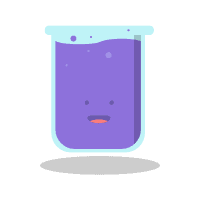
TEKS Biology High School - B.9.A: Biomolecules
Quiz by TEKS Biology High School
High School - Biology
Science (2010) (Archived)
Texas Essential Knowledge and Skills (TEKS)
Feel free to use or edit a copy
includes Teacher and Student dashboards
Track each student's skills and progress in your Mastery dashboards
With a free account, teachers can
- edit the questions
- save a copy for later
- start a class game
- automatically assign follow-up activities based on students’ scores
- assign as homework
- share a link with colleagues
- print as a bubble sheet
12 questions
Show answers
- Q1Students were given a list of seven elements and asked to identify the four elements that are most abundant in biomolecules. Which table correctly identifies the four most-abundant elements in biomolecules?30sB.9.A: Biomolecules
- Q2Proteins and carbohydrates have many functions in the body of an organism. Specific proteins and carbohydrates perform specific tasks. Information about a protein and a carbohydrate is given below. How are ferritin and glycogen similar in their primary functions for an organism?Both store information for the organismBoth support the structure of the organismBoth store energy used by the organismBoth store materials needed by the organism30sB.9.A: Biomolecules
- Q3Four different nucleotides are used as building blocks of DNA. Which of the following can be used to distinguish one nucleotide from another?The shape of the deoxyribose sugarThe length of the phosphate groupThe nitrogenous baseThe type of fatty acid30sB.9.A: Biomolecules
- Q4The complex carbohydrates pictured below are made by linking molecules of glucose. In all three complex carbohydrates, the subunits of glucose are bonded together differently. Because they have different structures, they most likely —contain different chemical elementsperform different functionsform different proteinscarry different nucleotides30sB.9.A: Biomolecules
- Q5A student preparing for a hike wants to pack a snack that has biomolecules that provide quickly available energy but few excess calories. Which nutrition label lists the best combination of biomolecules that provide quickly available energy while providing the fewest calories from other types of biomolecules?45sB.9.A: Biomolecules
- Q6The differences between two molecules include the type of sugar that forms a section of the molecules and the identity of one of the four nitrogenous bases that make up another section of the molecules. These two molecules are —proteinslipidsnucleic acidscomplex carbohydrates30sB.9.A: Biomolecules
- Q7Carbohydrates are more easily metabolized than lipids. However, on a gram-for-gram basis lipids provide cells with more —energynitrogenproteinsstructure30sB.9.A: Biomolecules
- Q8Which of the following biomolecules typically contains both nitrogen and phosphate?Nucleic acidCarbohydrateLipidProtein30sB.9.A: Biomolecules
- Q9Proteins and polysaccharides are polymers. These polymers are formed by dehydration synthesis. Which statement correctly identifies a difference in the structure of proteins and polysaccharides?Only polysaccharides can be folded and twisted to very specific shapesOnly proteins are formed from amino acids joined by peptide bondsOnly proteins can be large molecules with thousands of subunitsOnly polysaccharides are comprised of repeating units of cytosine, adenine, guanine, and thymine30sB.9.A: Biomolecules
- Q10Which of these best represents a fatty-acid molecule?30sB.9.A: Biomolecules
- Q11An advertisement for a health supplement for dogs claims to build lean muscle and strengthen tendons and ligaments, as well as provide energy. Which two biomolecules must the supplement contain to provide these benefits?Carbohydrates and lipidsProteins and carbohydratesNucleic acids and carbohydratesipids and nucleic acids60sB.9.A: Biomolecules
- Q12Two biomolecules are shown. Which of the following best describes these biomolecules?Molecule X is a carbohydrate, and Molecule Y is a nucleic acid.Molecule X and Molecule Y are both carbohydrates.Molecule X and Molecule Y are both nucleic acids.Molecule X is a nucleic acid, and Molecule Y is a carbohydrate.60sB.9.A: Biomolecules